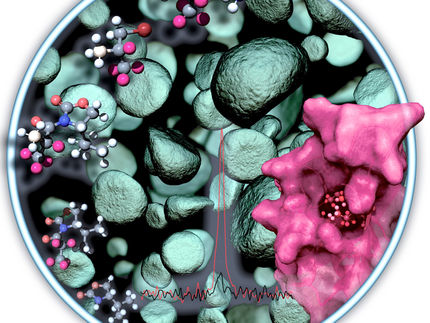New insights into the function of the main class of drug targets
About thirty percent of all medical drugs such as beta-blockers or antidepressants interact with certain types of cell surface proteins called G protein coupled receptors. In collaboration with researchers from the Paul Scherrer Institute, the group of Prof. Stephan Grzesiek at the Biozentrum of the University of Basel has now elucidated in detail how the structure of such a receptor changes when drugs bind and how the structural change transmits a signal to the cellular interior. These results have recently been published in "Nature".
A wide variety of drugs such as beta-blockers against high blood pressure or drugs against allergies, cancer, Parkinson's disease, HIV and others bind to cell surface proteins which belong to the family of G protein coupled receptors. The drug binding transmits a signal to the inside of the cell. Despite the fact that many structures of these receptors are known, it remained unclear how the signal is transmitted to the intracellular inside.
To better understand the signal transduction function, Prof. Stephan Grzesiek's team at the Biozentrum of the University of Basel, together with researchers from the Paul Scherrer Institute (PSI) have studied in detail one receptor - the β1-adrenergic receptor. Using Nuclear Magnetic Resonance spectroscopy (NMR), the scientists have been able to follow the motions of this receptor in response to various drugs, and have thus obtained unprecedented detailed insights into the general mechanism of G protein coupled receptor function.
Structural changes provide details on receptor function
The β1-adrenergic receptor is a protein embedded in the membrane of cardiac cells. It translates the binding of extracellular drug molecules into the activation of intracellular proteins. The hormone noradrenaline, for example, induces a signaling cascade in the cell, which at the end increases heart rate and blood pressure. So-called beta-blockers impede these effects by preventing the hormone from binding to the adrenergic receptor. Thereby, they reduce the heart rate. Structural details of the signal transduction caused by such receptor-ligand interactions have so far remained unclear.
"We have applied high resolution NMR to analyze the structural changes of the β1-adrenergic receptor upon binding of various drugs", explains first author Shin Isogai. "We could observe how the receptor recognizes the binding partner, interprets its chemical structure and transmits this information to the inside of the cell by changing its structure. This insight into the functionality of the β1-adrenergic receptor at the atomic level can be applied to the whole family of G protein coupled receptors, which are well known as important drug targets."
Prediction of drug efficacy
Using the NMR observation of the atomic nuclei, the scientists could see how deep the drugs insert into the receptor from the outside, how the drug pushes certain groups away and how it transmits this mechanical signal to the inside. Thus they identified crucial mechanical connections for the signal transmission within the receptor structure. The NMR signals also revealed the binding strength of the drugs and their potency to trigger an intracellular response. In fact, they could follow how a model protein for the intracellular response binds to the activated receptor. "We are very happy that we could see these details. The receptors are notoriously difficult to study. Many researchers have tried for more than a decade", emphasizes Isogai. "Now we can apply this method to see the function of individual amino acids and to study other receptors." In the future, the NMR method may also be used for drug screening and drug development.
Original publication
Most read news
Original publication
Shin Isogai, Xavier Deupi, Christian Opitz, Franziska M. Heydenreich, Florian Brueckner, Gebhard F.X. Schertler, Dmitry B. Veprintsev and Stephan Grzesiek; "Backbone NMR reveals allosteric signal transduction networks in the β1-adrenergic receptor"; Nature; 2016
Topics
Organizations
Other news from the department science

Get the analytics and lab tech industry in your inbox
By submitting this form you agree that LUMITOS AG will send you the newsletter(s) selected above by email. Your data will not be passed on to third parties. Your data will be stored and processed in accordance with our data protection regulations. LUMITOS may contact you by email for the purpose of advertising or market and opinion surveys. You can revoke your consent at any time without giving reasons to LUMITOS AG, Ernst-Augustin-Str. 2, 12489 Berlin, Germany or by e-mail at revoke@lumitos.com with effect for the future. In addition, each email contains a link to unsubscribe from the corresponding newsletter.
























































